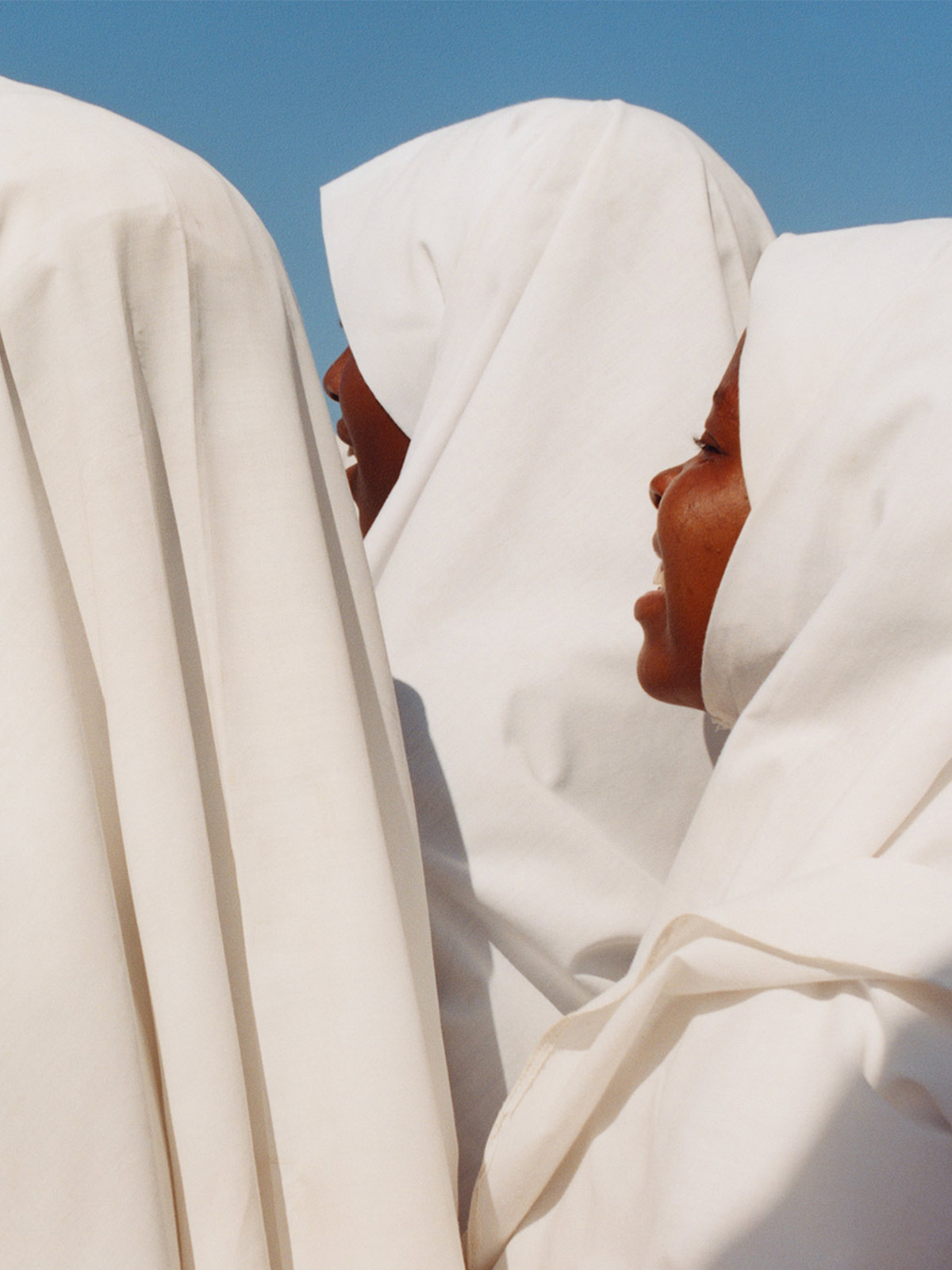The photographer's new London show encompasses 59 drawings, seven photographs, and a film created during his travels to Kenya, Romania, Louisiana and more.
“Our perspective on motion is at the mercy of chance / Rhythm creates a path through the day.” These are the notes from Jamie Hawkesworth’s new London show, A Blue Painted Fence. A single room encompasses 59 drawings, seven photographs, and a film. The photographs are the result of Hawkesworth’s trips to Kenya, Romania, Louisiana, and beyond.
A Blue Painted Fence indicates how far Hawkesworth has come, from mastering his craft at Preston Bus Station to displaying it in all its glory across 14 rooms at Amsterdam’s Huis Marseille. In A Blue Painted Fence, we see him reducing his work down to its essential rhythm, coalescing his experiences in a more minimal setting.
In the centre of the gallery space, Hawkesworth has built a small circular chamber to present the video work. Shot in Mombasa, it shows a group of girls in white headdresses joyfully bouncing up and down as the camera tracks in a circular motion. As the viewer stands inside the space, the image moves across the wall, encouraging the viewer to turn with it. “I wanted the audience to experience what I was experiencing when I was filming it,” explains Jamie. “It was boiling hot, I was extremely dizzy going round in circles filming… I liked the idea that you had to kind of walk in circles literally to watch it.”
Ironically, the practice of walking in circles is exactly what brought Hawkesworth to where he is today. “Walking in circles doesn’t really get you anywhere, but for me it did, because I used to loop this bus station and wait for people to catch my eye.” Jamie is referring to his Preston Bus Station series, a month spent traversing the gigantic Brutalist interchange and recording his encounters there. He cites this as the project that really shaped his work. “When I was thinking of doing the film, I loved this idea of making everybody walk in circles, because it was such a familiar thing for me to do when I was learning about photography,” he says. “Whatever I do, my mind always goes back to that project. I always think about it as a place where my understanding of photography was built.”
There are no captions in the exhibition, so I ask Jamie whether the geography of the work is important. “In a way the location is important, in that every place is a different trip. The physicality of actually going to Mombasa, taking the planes, spending three and a half weeks on the road driving around,” he reflects. “But then, ultimately, that little moment that ends up catching my eye, it becomes more monumental. So when those places are in the space I don’t need to say, “Oh, this was in Louisiana,” because that part was my trip, and then the monumental part is the bit I want people to see.”
The writing in this show isn’t the first time we’ve seen Hawkesworth break out of his primary medium. Earlier this year he exhibited his first sculptures, and recent travels saw him begin to use writing as a tool for observation.
“I felt like it would be interesting to see how these things I came across would feel when I wrote about them,” he says. “The same principle of going out and exploring, but instead of taking a photo, just writing a little bit about it. That’s where the title came from.”
“I always felt guilty not taking pictures or being in the darkroom, because I’d found stuff I really loved doing, so I wanted to do it all the time,” he continues. “I guess I feel a bit like that with these other things now; it feels just as relevant and inspiring to play around with sculpture or drawings. It’s just another way of digesting experiences, I suppose.”
The show also includes music: a bombastic classical accompaniment to the film which bounces around the otherwise tranquil gallery space. The soundtrack, by the Romanian-born composer Bartók, was the result of weeks spent driving around Romania with nothing but local radio to listen to.
“When I got back [to London], I got the rushes from Kenya, and saw these girls moving around in a circle.” He recounts. “I was like, ‘I wonder what that would be like with some Romanian folk music that’s just been drummed into my head for the last three weeks?’ And I kind of liked it!”
Where Preston Bus Station saw Hawkesworth finding the variety in a single place, this new show captures the opposite: a singular line of enquiry, turned on a broad expanse of different locations and media. “I liked the idea that I put portraits of Mombasa next to these villages in Romania, next to a film, the drawings, Louisiana—that they were all just pushed together,” he explains. “I’d started to think of this idea of the rhythm that you create when you’re walking, and how one photo leads to another that leads to the next… If I’m really banging on about this idea that things can sit together, then I need to start thinking why, how, and what those experiences mean.”
A Blue Painted Fence is open until December 19 at 1-7 Aylesbury Street, London.







